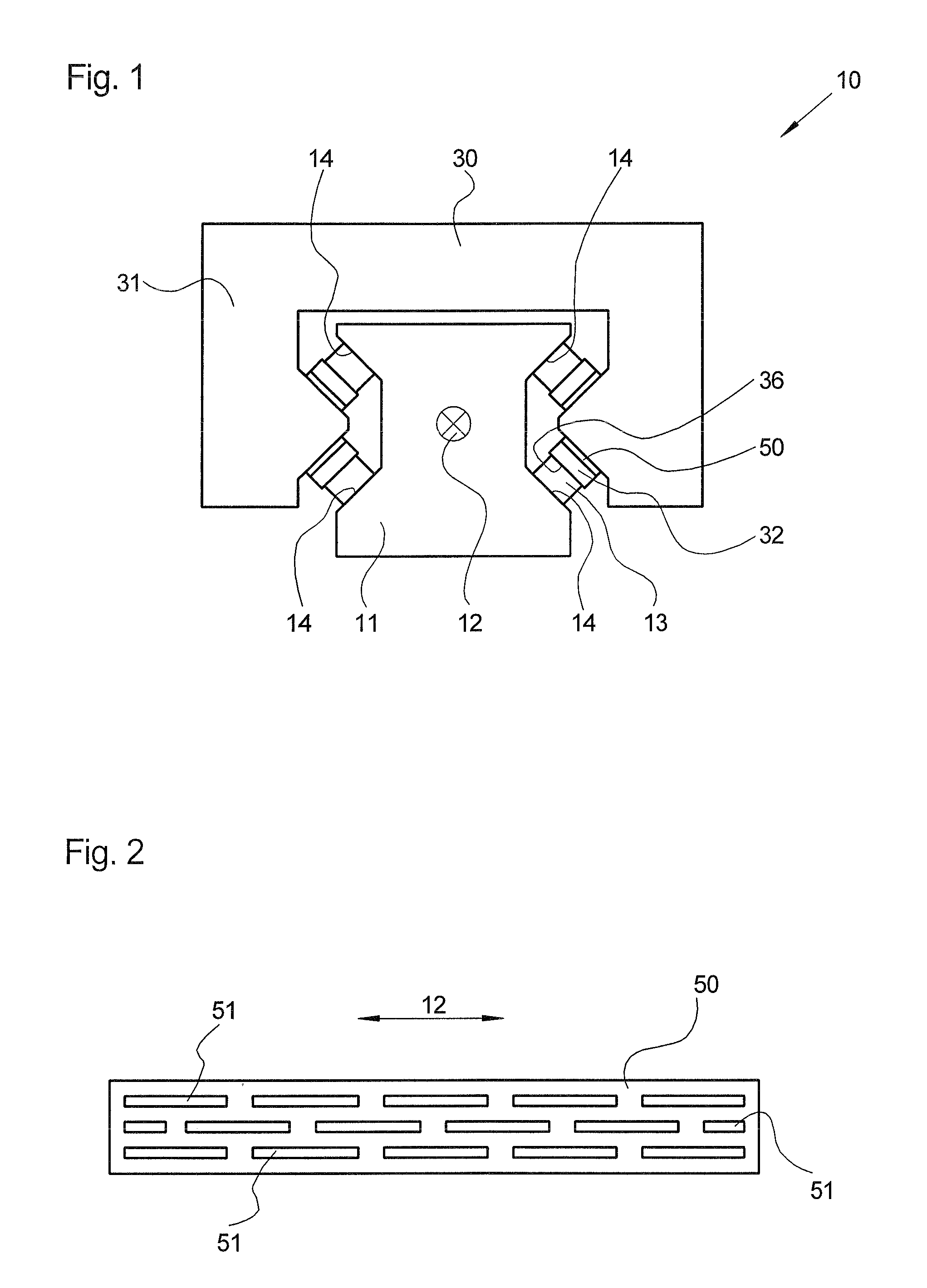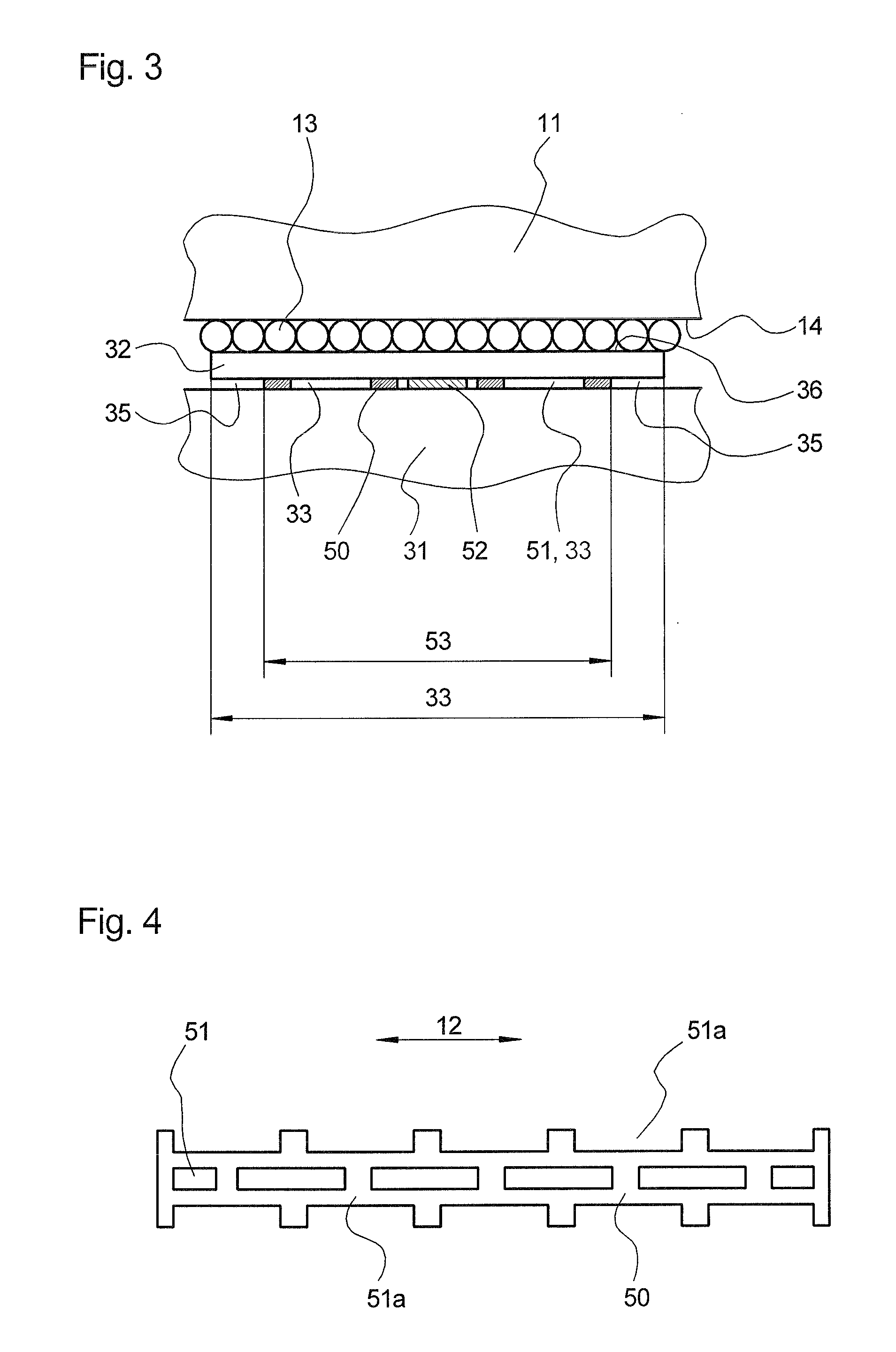Linear roller bearing with bonded rolling surface parts
- Summary
- Abstract
- Description
- Claims
- Application Information
AI Technical Summary
Benefits of technology
Problems solved by technology
Method used
Image
Examples
Embodiment Construction
[0026]A linear roller bearing according to the present invention may be created by starting with the linear roller bearing known from DE 10 2007 056 862 and replacing the carriage rolling surfaces designed as single pieces with the main body with the rolling surface parts which are described below and include the carriage rolling surfaces. DE 10 2007 056 862 is therefore referenced in entirety and is incorporated in the contents of the present application.
[0027]FIG. 1 shows a basic schematic cross section of a linear roller bearing 10 according to the present invention. Linear roller bearing 10 includes a guide rail which is composed of hardened roller bearing steel and extends in a longitudinal direction 12; longitudinal direction 12 is oriented perpendicularly to the plane of the drawing. Guide rail 11 has a substantially constant cross-sectional shape along its entire longitudinal extension; a total of four flat rail rolling surfaces 14 are provided for the substantially circular...
PUM
 Login to View More
Login to View More Abstract
Description
Claims
Application Information
 Login to View More
Login to View More - R&D
- Intellectual Property
- Life Sciences
- Materials
- Tech Scout
- Unparalleled Data Quality
- Higher Quality Content
- 60% Fewer Hallucinations
Browse by: Latest US Patents, China's latest patents, Technical Efficacy Thesaurus, Application Domain, Technology Topic, Popular Technical Reports.
© 2025 PatSnap. All rights reserved.Legal|Privacy policy|Modern Slavery Act Transparency Statement|Sitemap|About US| Contact US: help@patsnap.com



